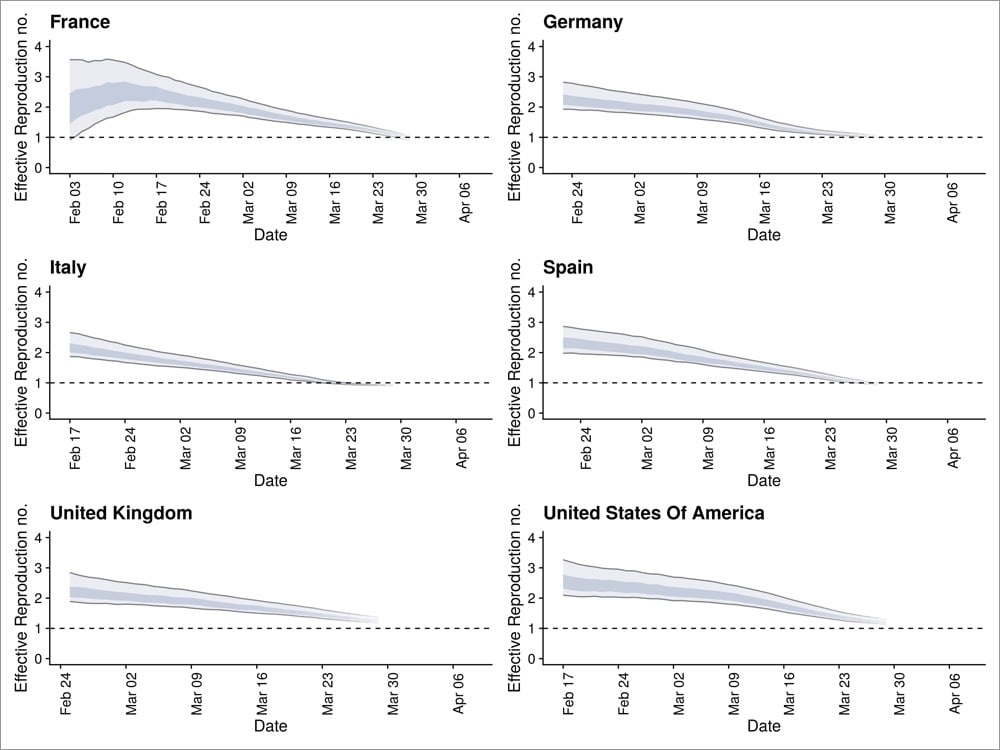“Strong Evidence” That Social Distancing Is Working to Slow the Spread of Covid-19

Trevor Bedford, who does research on epidemics and infectious diseases, has compiled a number of papers and data sets with “strong evidence” that social distancing measures have slowed Covid-19 transmission rates around the world.
This report (from the Imperial College team who produced the sobering report that has been the blueprint for pandemic responses around the world) estimates that measures taken in several European countries have lowered their effective reproduction numbers (the R value) to close to 1.
Overall, we estimate that countries have managed to reduce their reproduction number. Our estimates have wide credible intervals and contain 1 for countries that have implemented all interventions considered in our analysis. This means that the reproduction number may be above or below this value. With current interventions remaining in place to at least the end of March, we estimate that interventions across all 11 countries will have averted 59,000 deaths up to 31 March [95% credible interval 21,000-120,000]. Many more deaths will be averted through ensuring that interventions remain in place until transmission drops to low levels. We estimate that, across all 11 countries between 7 and 43 million individuals have been infected with SARS-CoV-2 up to 28th March, representing between 1.88% and 11.43% of the population. The proportion of the population infected to date — the attack rate — is estimated to be highest in Spain followed by Italy and lowest in Germany and Norway, reflecting the relative stages of the epidemics.
And this was published on March 30 — here’s the latest data. The paper goes on to say (italics mine):
We cannot say for certain that the current measures have controlled the epidemic in Europe; however, if current trends continue, there is reason for optimism.
An Institute for Disease Modeling report from March 29 shows a similar reduction in their effective reproduction number in King County, Washington (the 12th most populous county in the US).
The graphs at the top of the post are from the latest data compiled by the Centre for the Mathematical Modelling of Infectious Diseases. Lots of countries looking like they are headed for an effect R value of 1, which would indicate a slowing (rather than growing) epidemic.





Stay Connected